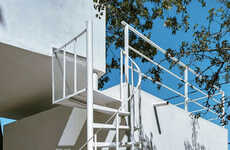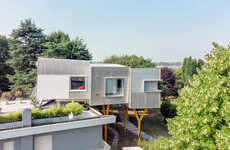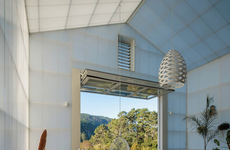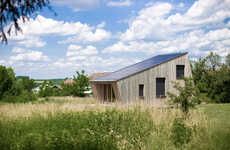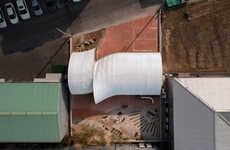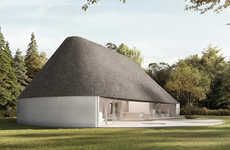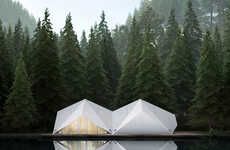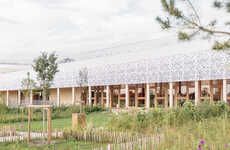
The Friggatto Structure Can Be Pushed Apart
Rahul Kalvapalle — May 15, 2015 — Art & Design
References: fullscalestudio.blogspot.se & gizmag
Friggato is a wonderfully novel and cheeky project designed by Full Scale Studio to take advantage of a loophole in Swedish building permit laws. Rather than comprising a single, large structure that would require a pricey permit, the Friggatto structure comprises two small buildings, one of which (the Frigg) is set on wheels. The wheel-set building simply needs to be pushed a short distance away from its larger sibling (the Atto) once every six months in order to avoid requiring a permit.
When the Frigg is moved, it legally becomes a vehicle. However if it sits in the same position for more than six months at a time, it is technically a house. Therefore by moving it away from the Atto once every six months, the volume is rendered permit-free meaning no municipal fee is charged.
This is architectural innovation at its best, with the Friggato proving that architectural projects can be fun, functional and cost-saving at the same time.
When the Frigg is moved, it legally becomes a vehicle. However if it sits in the same position for more than six months at a time, it is technically a house. Therefore by moving it away from the Atto once every six months, the volume is rendered permit-free meaning no municipal fee is charged.
This is architectural innovation at its best, with the Friggato proving that architectural projects can be fun, functional and cost-saving at the same time.
Trend Themes
1. Loophole Exploitation - Architects and designers are finding creative ways to take advantage of legal loopholes to save costs and bypass regulations.
2. Modular Structures - The use of modular structures is gaining popularity as a way to circumvent restrictive building permit laws.
3. Functional Simplicity - Architectural projects that prioritize both functionality and simplicity are becoming increasingly sought after.
Industry Implications
1. Architecture & Design - The architecture and design industry can explore innovative ways to create cost-effective and legally compliant structures by leveraging legal loopholes.
2. Construction - The construction industry can adapt to the use of modular structures to streamline building processes and reduce costs.
3. Real Estate - The real estate industry can benefit from functional and simple architectural projects that offer cost-saving opportunities for property development.
1.9
Score
Popularity
Activity
Freshness


